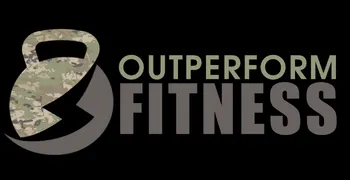Welcome to the Outperform blog page - your ultimate destination for discovering the secrets to unlocking your full potential in the realm of tactical professions. Whether you're striving to achieve your dream career or looking to elevate your fitness for better job performance, we've got you covered.
Article Topics:

ADF PFA Standards: Why the Minimum Isn’t Enough
ADF PFA Standards: Why the Minimum Isn’t Enough
If you’re applying for the ADF, one of the first fitness hurdles you’ll face is the Pre-entry Fitness Assessment (PFA). It’s not hard to find the pass marks online — but what’s often missing is this:
The PFA is not there to test how fit you are — it’s there to test if you’re safe to start.
This assessment isn’t designed to prepare you for military life — it’s just the start. In this blog, we’ll break down what the PFA includes, why it exists, and why aiming only to pass it will leave you underprepared.
What Is the PFA?
The PFA is a short fitness test completed in the lead-up to your enlistment — usually within 6 to 12 weeks of your basic training start date. It includes:
Push-ups
Sit-ups
Beep test (shuttle run)
Pull-ups for some roles (e.g. Special Forces)
What’s the Purpose of the PFA?
Think of the PFA as a risk management tool. Its goal isn’t to push your limits — it’s to make sure you’re not walking into training completely unprepared.
The PFA ensures:
You’ve got a basic level of strength and cardio fitness
You’re less likely to get injured in the early stages of training
You’re not starting from zero
But let’s be clear — passing the PFA doesn’t mean you’re ready for military training. It’s just to show you’re safe to begin.
What Does It Take to Pass?
The exact standards vary depending on:
Service (Army, Navy, Air Force)
Role (e.g. combat vs support)
Gender in some cases

Let’s Talk About BMI
BMI (Body Mass Index) is a simple calculation using your height and weight. It’s used to estimate whether you’re within a healthy weight range.
For ADF entry, your BMI must fall between 18.5 and 32.9.
Too low? You may be underweight or undernourished
Too high? You may carry excess body fat that increases injury risk
It’s not about looks — it’s about safety and recovery. Outside the range? You’ll usually need a doctor’s clearance before continuing.
Why the PFA Alone Isn’t Enough
Passing the PFA might feel like a big deal — and it is. But don’t stop there.
Here’s what many applicants miss:
Once you’re in, you’ll face more demanding fitness tests — like the Army BFA or Air Force PFT.
Training gets tougher fast. You’ll need to move under load, perform under fatigue, and back it up every day.
Those who barely scrape through the PFA often struggle the most in the first few weeks — or worse, get injured and held back.
The goal isn’t to just get in. The goal is to thrive in training and build a foundation for long-term service.
Train for What’s Ahead — Not Just What’s Tested
Here’s the mindset shift you need:
✅ Know your PFA standard
✅ Meet it early — and move beyond it
✅ Build a body that’s resilient, adaptable, and ready to work hard daily
If all your prep revolves around the beep test, push-ups, and sit-ups — you’re leaving gaps. Military training demands:
Loaded carries
Pack marches
Team-based endurance
Agility under stress
Recovery under pressure
If you’re not preparing for those, you’re not preparing for the job.
Final Message: Don’t Settle for Minimum
Here’s the bottom line:
The PFA gets you in the door. That’s it.
But what matters more is how you show up after that. Don’t let the minimum become your benchmark. Set a higher standard for yourself — one that’ll carry you through training, into your role, and beyond.
Train smart. Be ready. Be reliable.
👉 Want a structured plan that actually prepares you for service? Check out the Fit for Service training plan — built to take you beyond the beep test and into battle-ready shape.
WANT TO GET
BATTLE READY?
Specialised online fit-prep program for ADF & First Responder applicants
Copyright Outperform Fitness © 2023.





